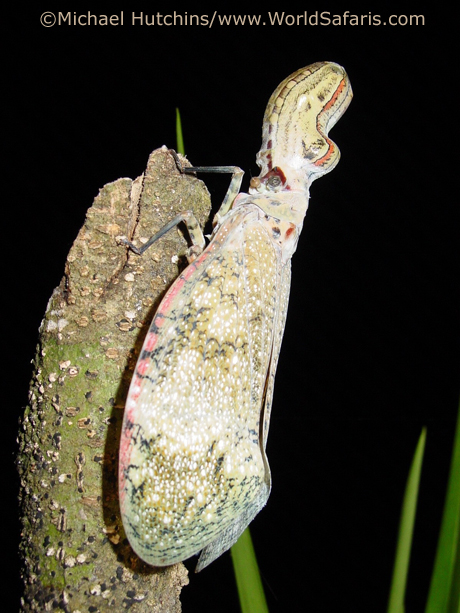In my many world travels, I have often sought out the larger mammals—the lions, hyenas, zebras, elephants, giant anteaters, crab-eating foxes, giant tortoises, common wombats, Tasmanian devils, red kangaroos, and so forth. However, I’ve gotten just as much enjoyment when happening upon the smaller examples of life’s amazing diversity, the amphibians, reptiles, insects, and the like. In one of my favorite places in the world—Tortuguero National Park, Costa Rica, I’ve come across numerous examples of incredible insects and amphibians, such as the colorful poison dart frogs, which have caught my eye and captured my imagination.
One of the most bizarre and fascinating insects I’ve encountered in this region is the lantern fly (Fulgora laternaria), also known as the peanut bug and peanut-headed lantern fly.
This amazing bug, which inhabits tropical rainforests in Central and South America, can reach a length of 3-3.5 inches, with a wingspan of 3.9-5.9 inches. Its defining characteristic is the large, bulbous protuberance on its head, which can reach a length of a half an inch or more. This peanut-shaped structure, which has false eyes, is thought to mimic the head of a lizard or snake and be a deterrent to predators. In addition, when attacked, the lantern fly displays large fake eye-spots on its wings as well, all while emitting a nasty-smelling substance.
Despite its menacing appearance, this insect is completely harmless to humans and feeds on the sap of plants, mainly from certain tree species. Interestingly, local folklore has created a different impression. In several countries, including Ecuador, Columbia and Venezuela, the machaca or chicharra-machacuy bug is thought to be dangerous to humans. According to local legend, if one is bitten by this bug, he or she must have sex within 24 hours or die from an incurable disease. Armed with science rather than myth, fortunately we know better.


Recent Comments